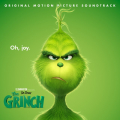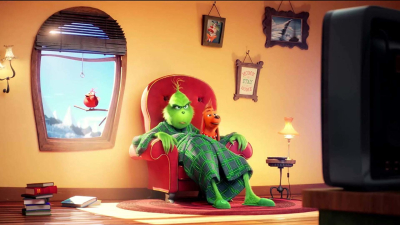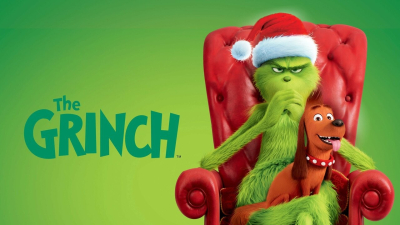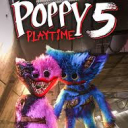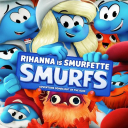The Grinch
One of the joys of the holiday season is revisiting beloved stories that encapsulate the spirit of Christmas. Among these, "The Grinch" stands out as a timeless classic, resonating with audiences of all ages. The 2018 animated theatrical release, brought to life by the creators of "Despicable Me," offers a fresh yet familiar take on Dr. Seuss's cherished tale of transformation and cheer. With Benedict Cumberbatch lending his voice to the infamous Grinch, this adaptation manages to capture the essence of Seuss's world while adding vibrant new dimensions.
The legacy of the Grinch is deeply rooted in the imaginative world crafted by Dr. Seuss back in 1958. Many remember this green-furred curmudgeon from childhood readings or the classic Chuck Jones TV special. This new animated feature pays homage to those roots by preserving the whimsical essence that readers and viewers have come to love. Yet, it also offers a modern twist, with animation that dazzles and a narrative that expands on what was glimpsed in Seuss’s original verses.
A Reimagined Whoville
The visual presentation in the 2018 version is a visual feast, a delight for the eyes with its bold, curvaceous architecture that teeters on the brink of surreal. Whoville is depicted as a pop-up wonderland, each frame meticulously crafted to resemble a twinkling gingerbread village. This vibrant setting invites viewers into the joyful chaos of Christmas preparations, with every window and rooftop draped in festive attire, shimmering under the glow of holiday lights.
In stark contrast lies the Grinch's abode, a cold and cavernous fortress atop Mt. Crumpit, perfectly capturing his isolation and disdain for the world below. The lair is adorned with gadgets and gizmos, all designed for the singular purpose of keeping the joys of others at bay. The stark difference between Whoville and the Grinch's dwelling underscores the thematic core—the choice between loneliness and community.
The Grinch Unveiled
To characterize the Grinch, Cumberbatch eschews an accent typically associated with his British roles, instead opting for a voice that underscores the character’s cynical and devious charm. This vocal choice breathes new life into the narrative-driven Grinch, whose backstory is fleshed out in this iteration. Unlike the book or previous adaptations, the film ventures into the Grinch’s past, exploring the poignant loneliness that crafted his antipathy toward Christmas.
However, this backstory suprisingly does not pull away from the joy and laughter that one expects from such animated tales. It adds depth, offering a whisper of understanding to an audience that might, at some point, have felt a tinge of his isolation. This depth makes his eventual transformation all the more rewarding, as it allows viewers to empathize, rather than disdain, his initial bitterness.
Cindy Lou Who: A Determined Heroine
Yet, it is the expanded role of Cindy Lou Who that is truly captivating in this rendition. No longer merely a curious child with a thirst for water, she is depicted as a resourceful and caring young girl on a mission to shift the axis of Christmas. Her selfless intent to aid her mother introduces a subplot that complements and contrasts the Grinch's cynicism beautifully.
Cindy Lou, voiced by the talented Cameron Seely, adds a layer of heart and humor, her plan to trap Santa setting off a series of events as mischievous and cleverly conceived as those of the Grinch himself. This parallel journey between Cindy Lou and the Grinch creates a delightful narrative symmetry, elevating the film’s warmth and emotional depth.
The Sidekicks: Max and Fred
In this adaptation, Max, the Grinch’s loyal canine companion, is more than just a silent sidekick. His interactions with the Grinch are full of nuance and humor, shedding light on the softer side of the otherwise crusty villain. Max emerges as a beacon of loyalty and companionship, ever faithful despite his master's grumpiness.
Joining this duo is Fred, the rotund reindeer who steals the show with his gentle demeanor and visual gags. Fred adds a comedic punch, yet his inclusion is not without purpose—symbolizing moments of unexpected cheerful camaraderie. Together, Max and Fred bring warmth and comic relief, reminding us of the significance of friendship amid life's challenges.
The Humor and Heart of Whoville
Humor in this version is skillfully balanced with tender moments, creating a seamless blend of laughter and introspection. Kenan Thompson voices a sprightly Whovian with an unmatched enthusiasm for Christmas cheer, bringing light to every scene he graces. His character lends a particular vibrancy that sparks smiles, serving as a counterpoint to the Grinch's grumpiness.
The film’s comedic timing is artfully arranged, making it accessible to audiences of all ages. Children will giggle at the Grinch's clumsy yet clever schemes, while adults appreciate the sly winks at the nuances of holiday madness often experienced in real life. This multi-layered humor is part of what makes the film consistently engaging.
Aesthetic Delight and Musical Enchantment
The aesthetic quality of the animation is testament to the evolution of CGI technology—each frame is a vibrant canvas, teeming with color and life. From the pomp of extravagant holiday displays to the serene beauty of a snow-dusted Whoville, the visual artistry is nothing short of breathtaking.
Complementing the film’s visual splendor is a stirring musical score by Danny Elfman, interspersed with classic and modern renditions of beloved Christmas melodies. A standout is Tyler the Creator’s contemporary twist on “You’re a Mean One, Mr. Grinch,” which provokes nostalgia while having a fresh zing. The music underscores the narrative’s emotional highs and lows, creating an auditory experience as rich as the visual.
The Moral of the Story
The narrative carries a timeless message, serving as a gentle reminder that the heart of Christmas does not rest in material gifts, but rather in the kindness and warmth shared among loved ones. It echoes the sentiment that genuine transformation starts with opening oneself to the community and the bonds that define it.
The Grinch’s growth—from a solitary, sour recluse to becoming part of the Whoville Christmas festivities—underscores the film’s central moral. It is impossible not to feel a swell of emotion as the Grinch stands at the precipice of change, his heart, quite literally, growing larger with every gesture of redemption and grace.
A Perfect Family Tradition
This cinematic adaptation of "The Grinch" deftly preserves the whimsical heart of Dr. Seuss’s tale, while offering new layers for contemporary audiences to explore. It is a reminder that while grand in scale, the holiday is at its core, an opportunity to extend empathy, fellowship, and joy.
As an offering that resonates with both nostalgia and innovation, the 2018 "The Grinch" has the makings of a new family tradition. Children and adults alike will find something to savor in its vibrant hues, endearing characters, and resonant messages. Whether you approach it with fresh eyes or cherished memory, this animated delight continues to etch itself into the canon of holiday classics.
Conclusion: The Grinch's Evergreen Legacy
Reflecting upon "The Grinch," it is clear why this tale has endured over generations. Its ability to meld festive whimsy with profound insight sets it apart, offering both entertainment and introspection in equal measure. The 2018 animated film exemplifies this balance, retaining the heart of the original while embracing the storytelling possibilities of our time.
In conclusion, "The Grinch" is a meaningful reminder that transformation and community lie at the heart of Christmas. This colorful reimagination breathes fresh life into a timeless narrative, ensuring its place as not just a seasonal viewing choice but a testament to the universal virtues of kindness and love.
